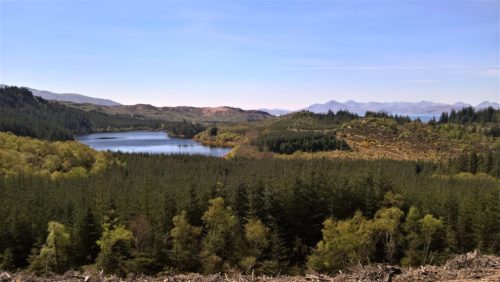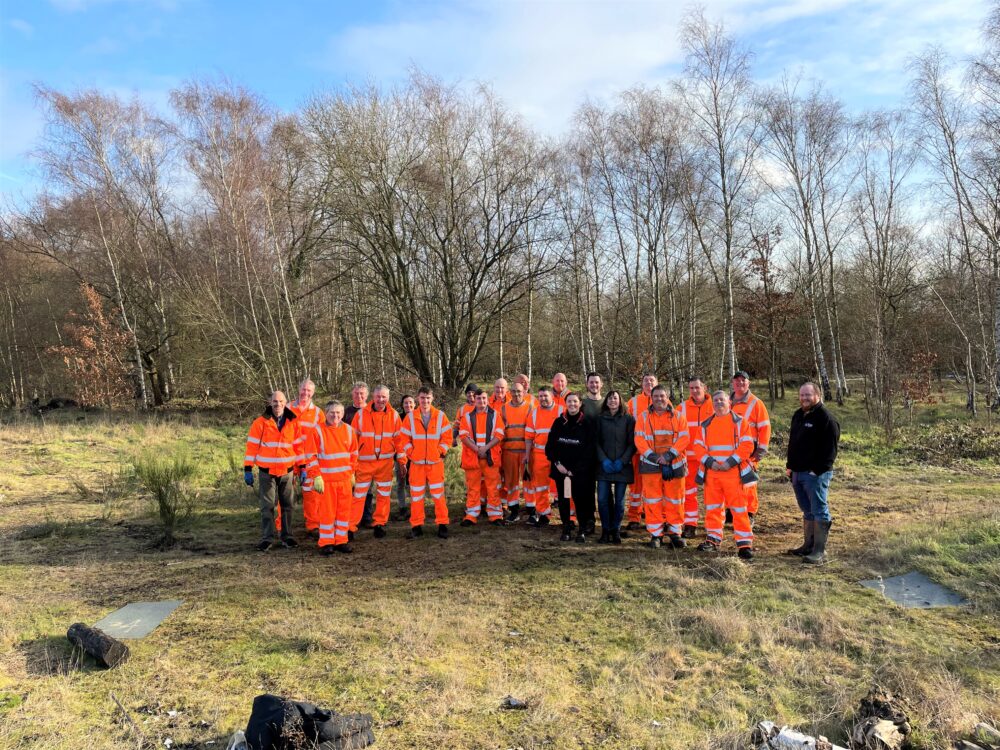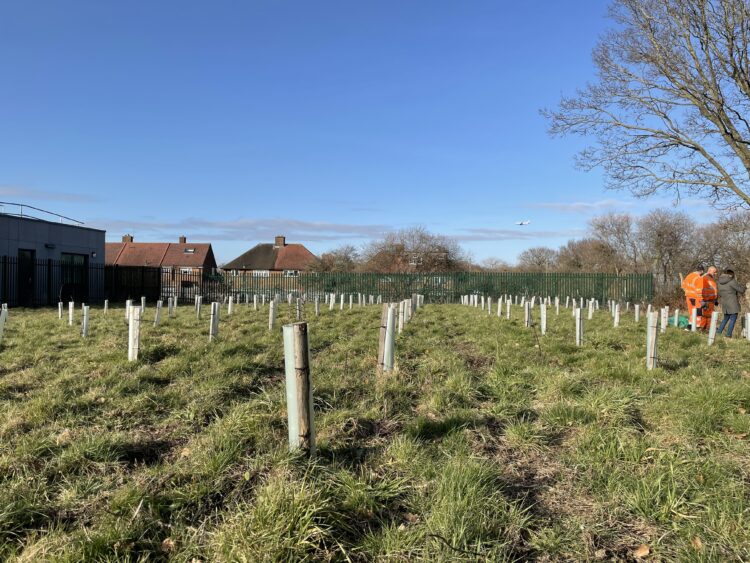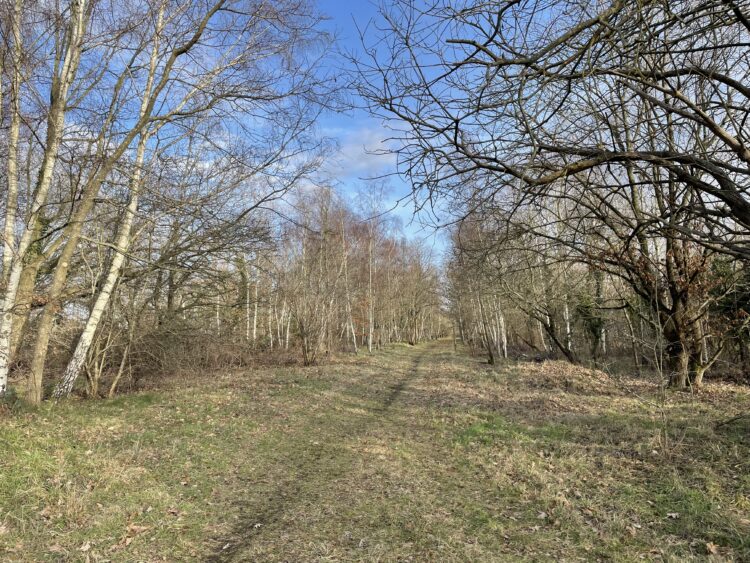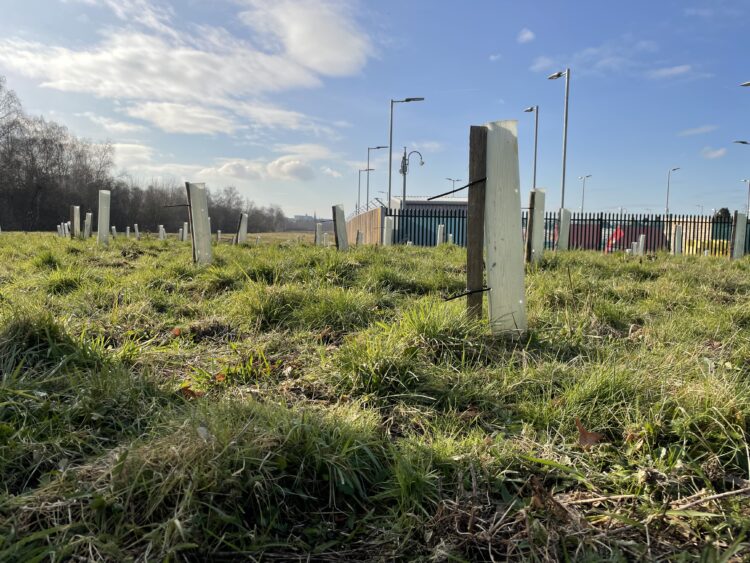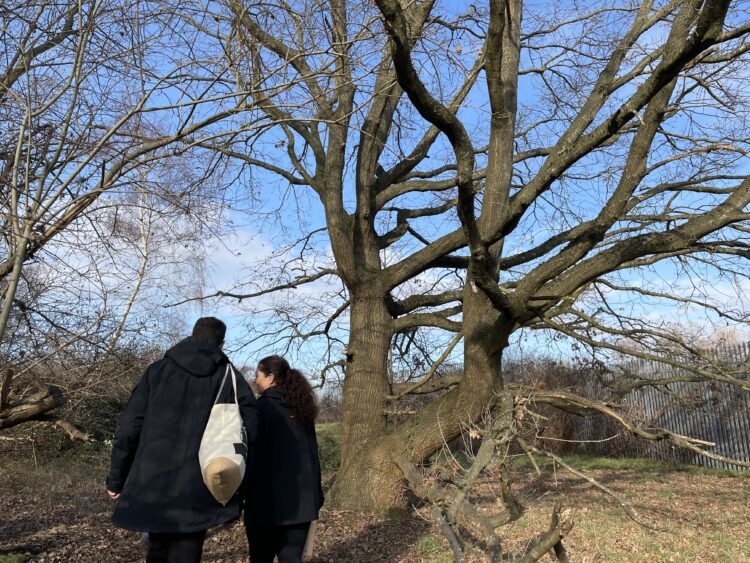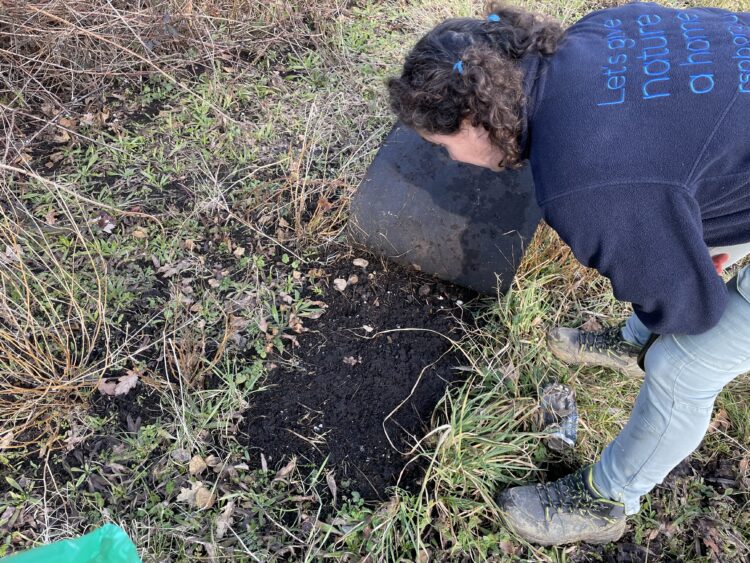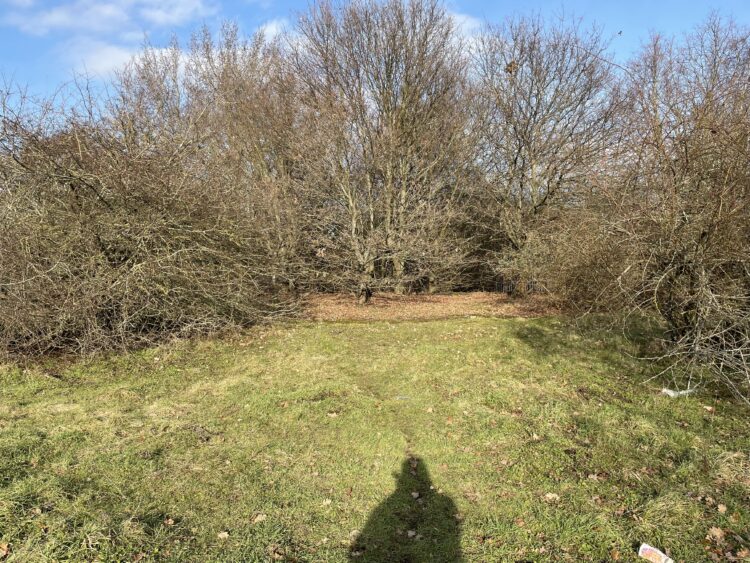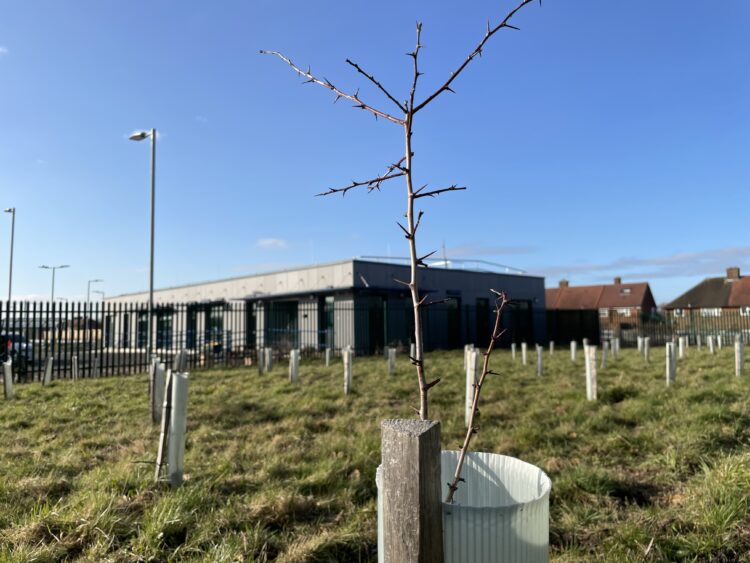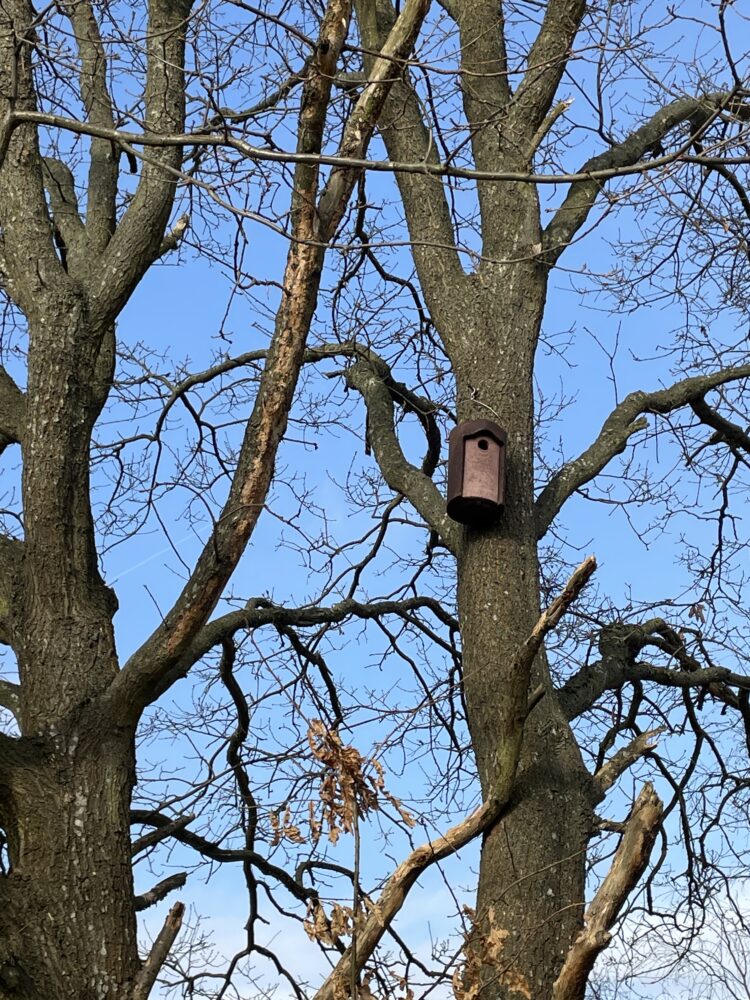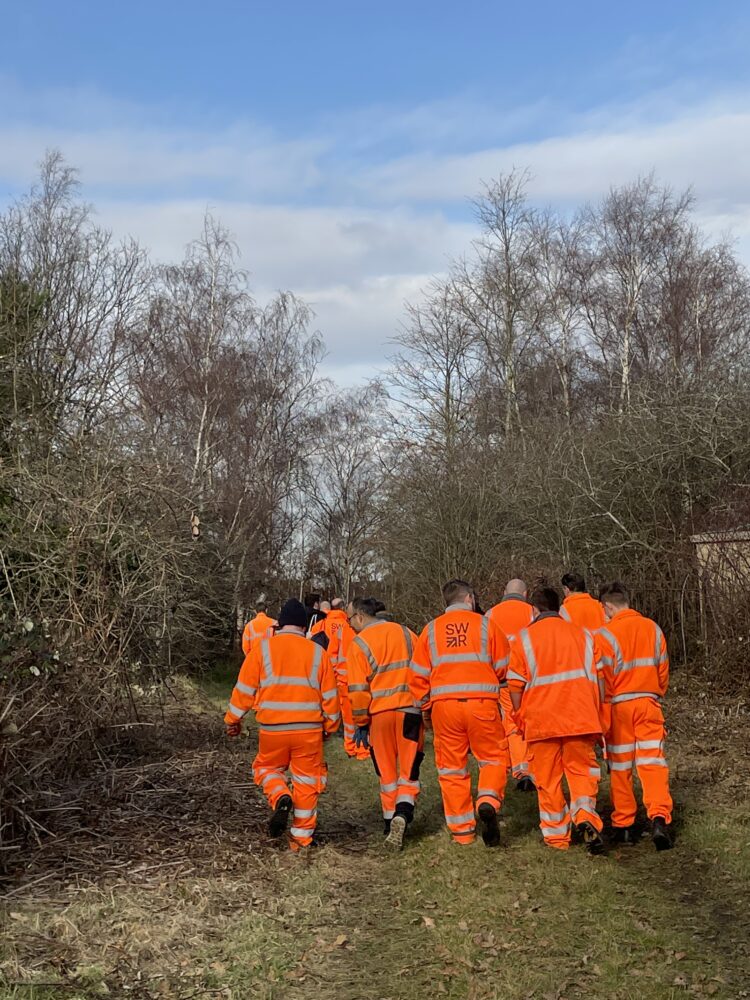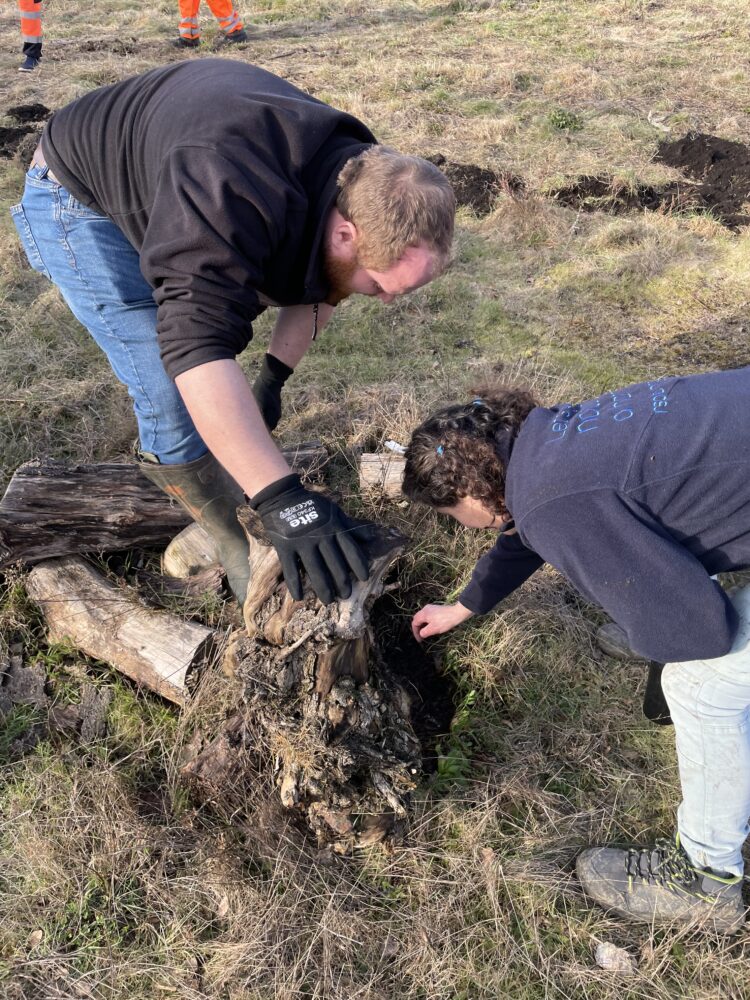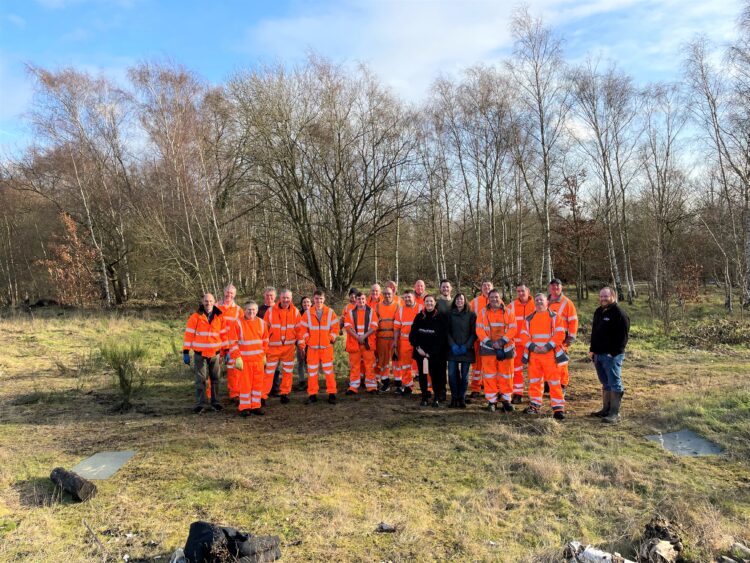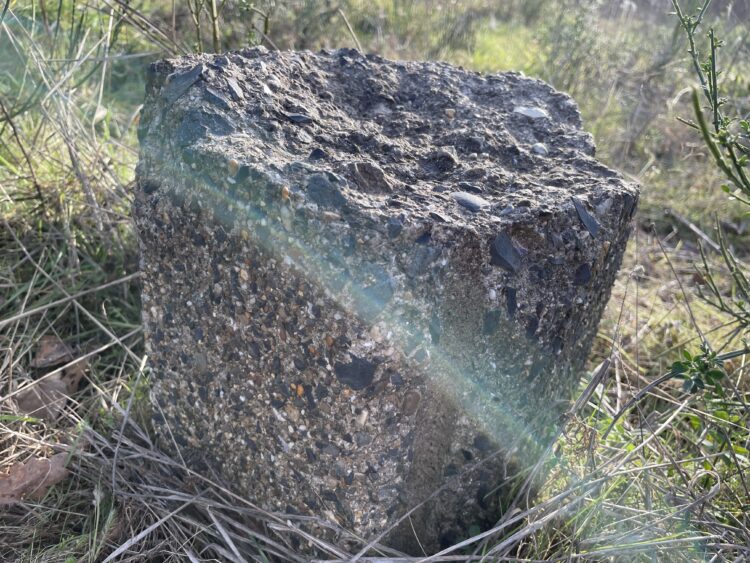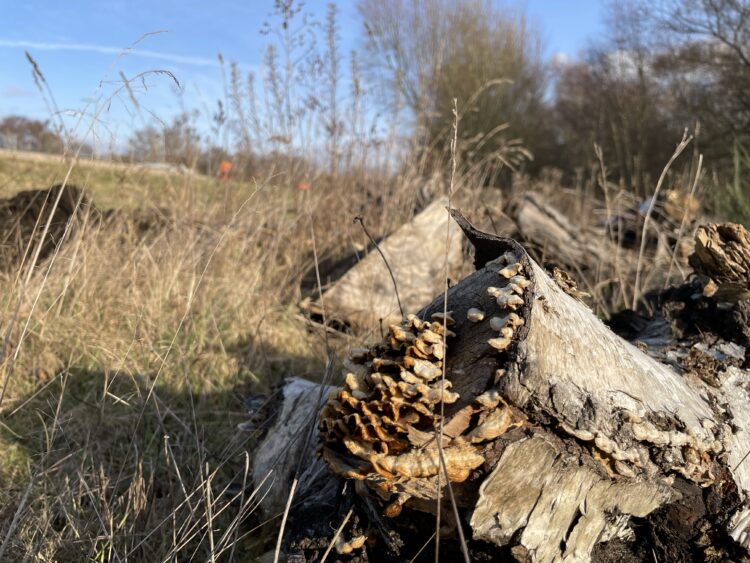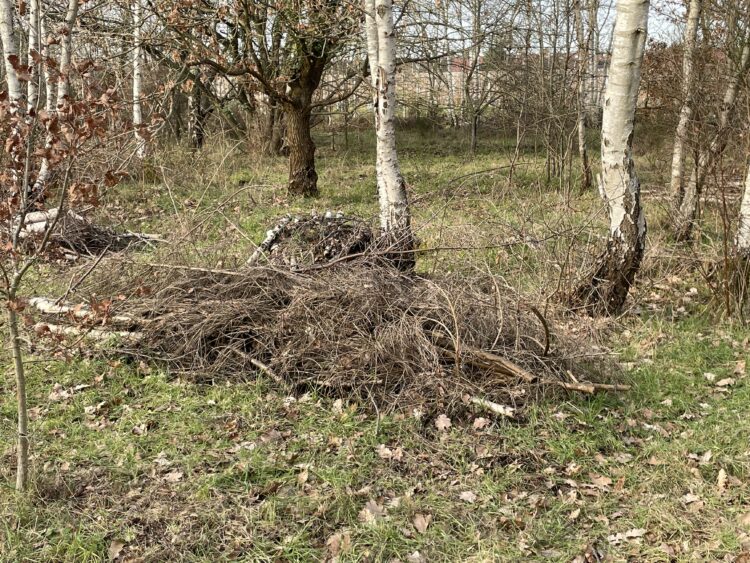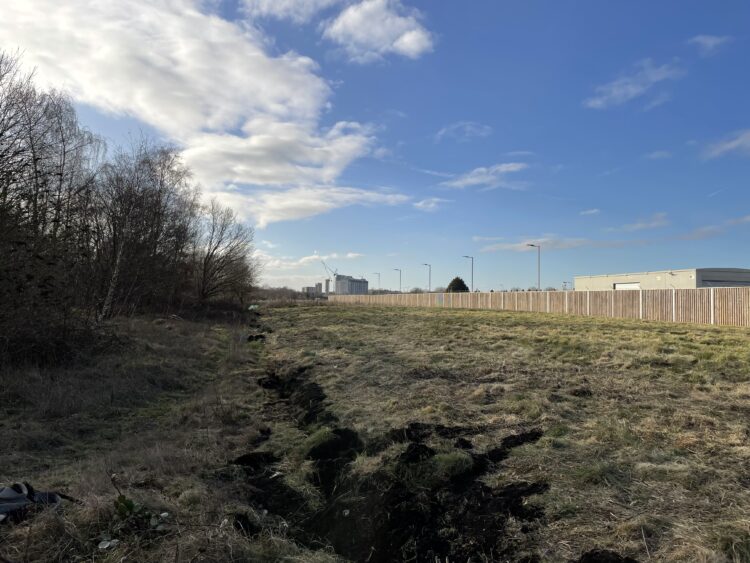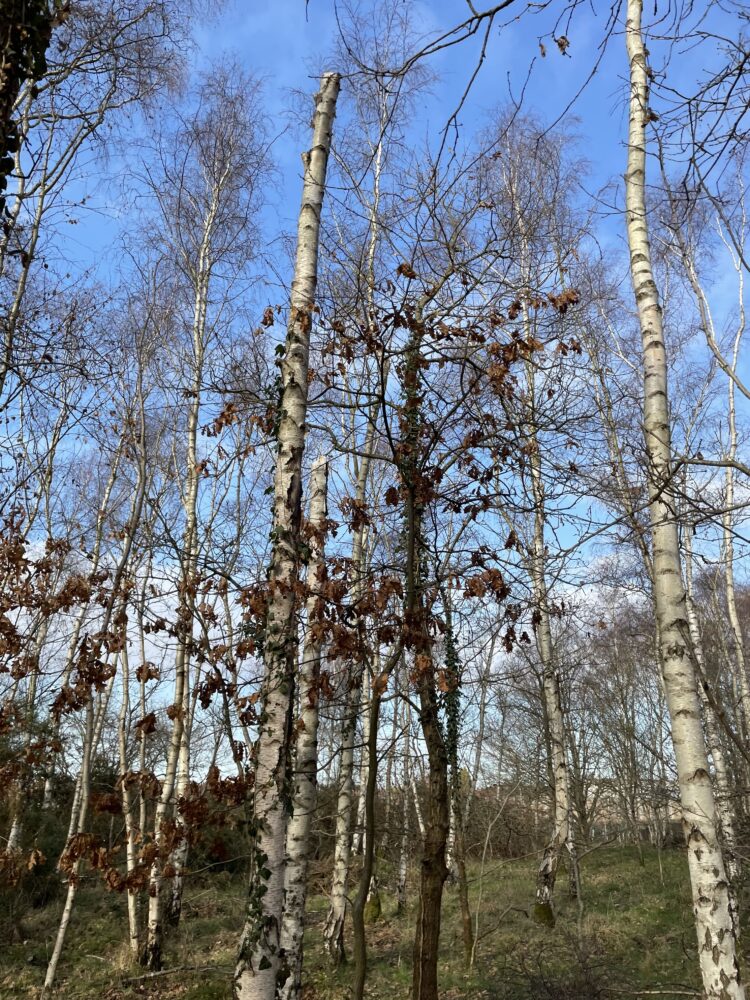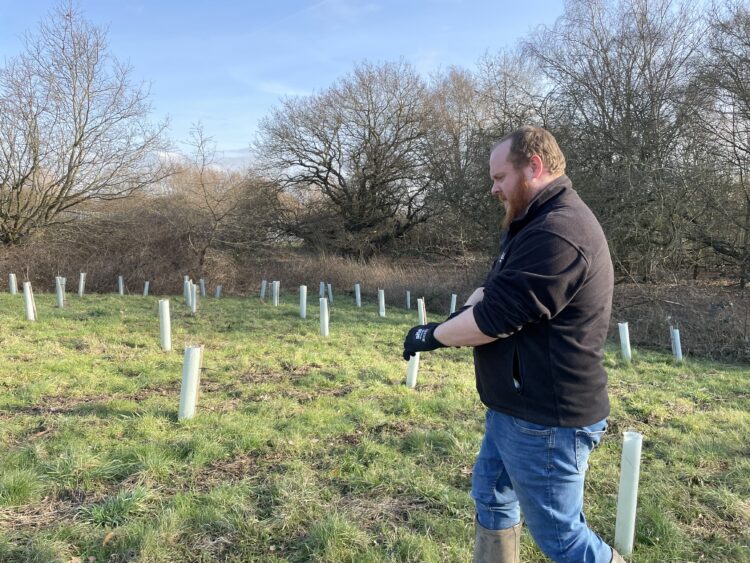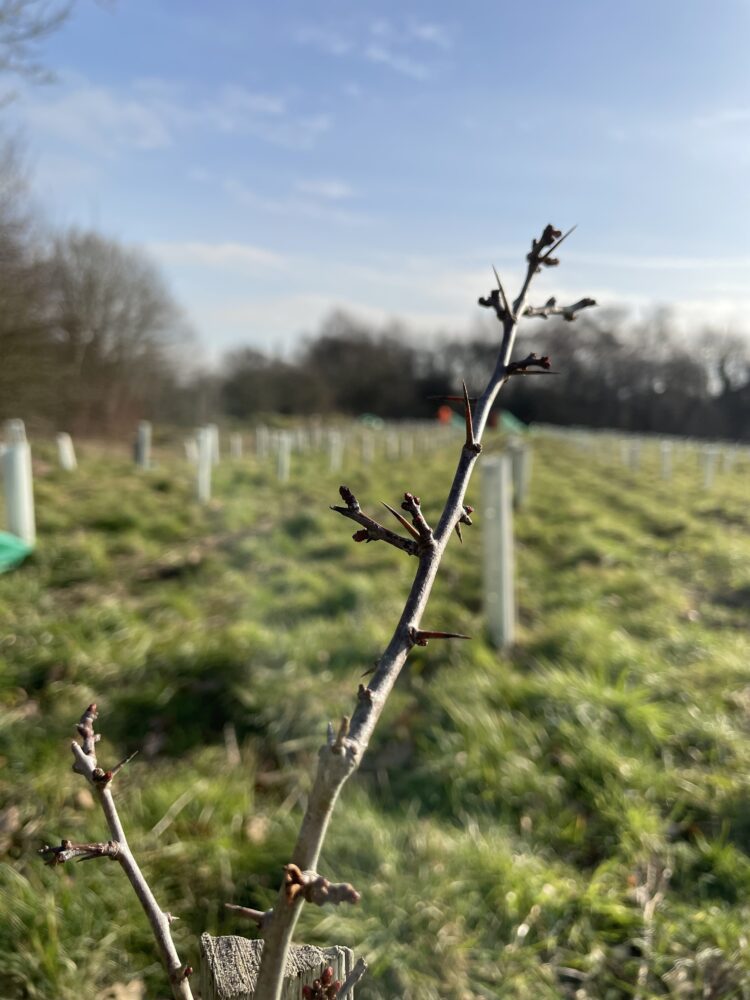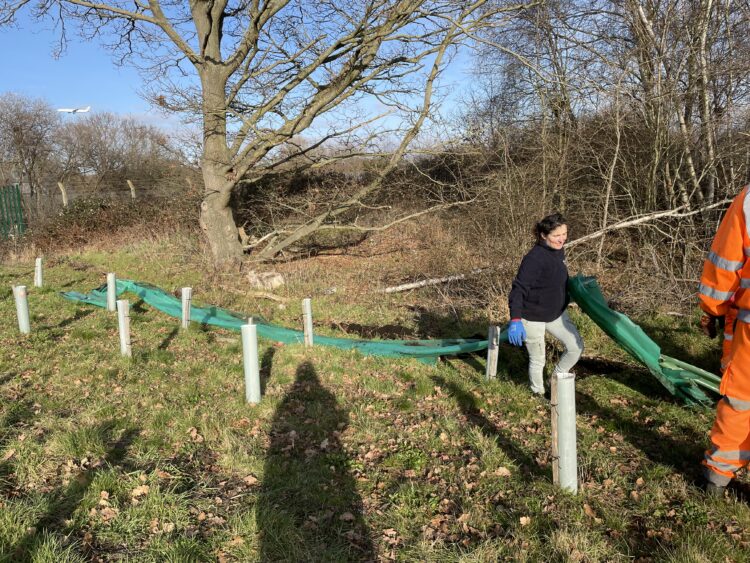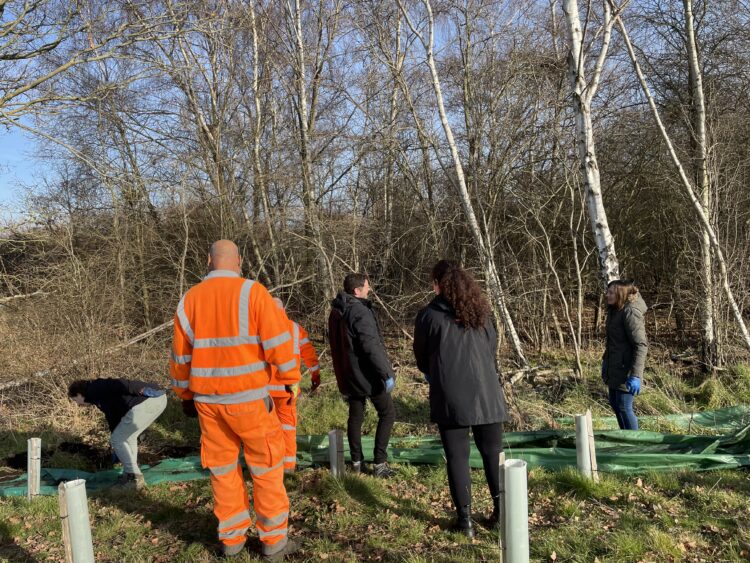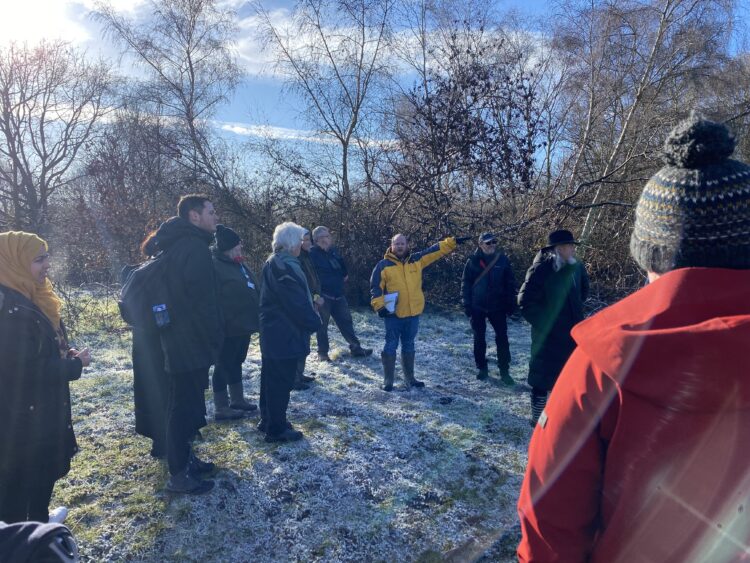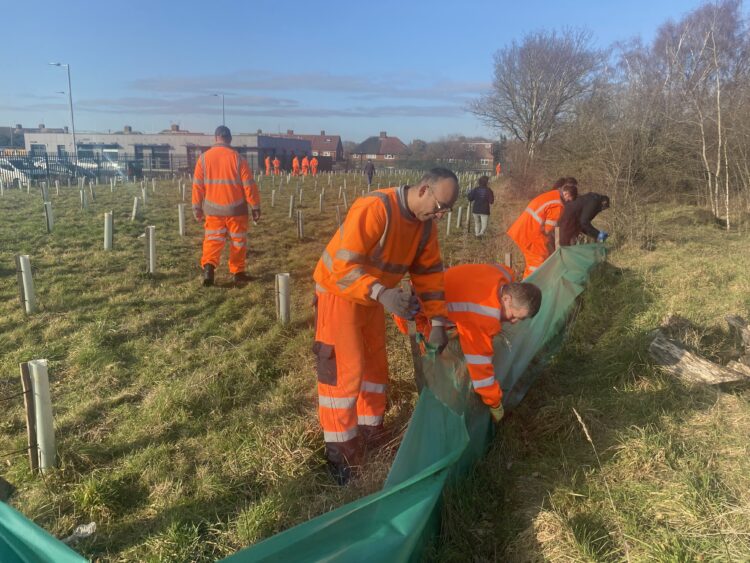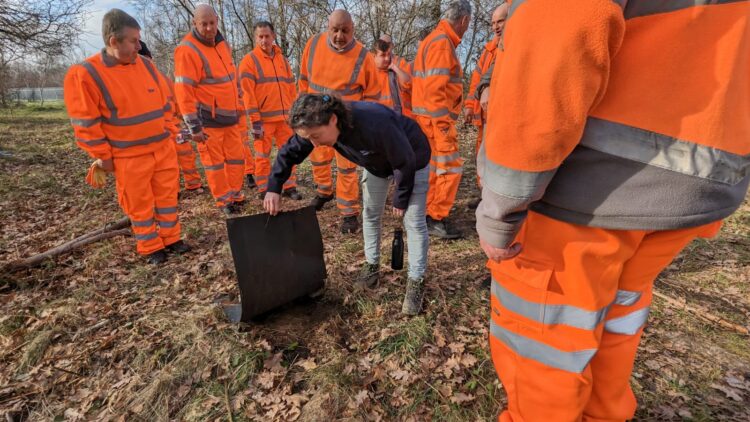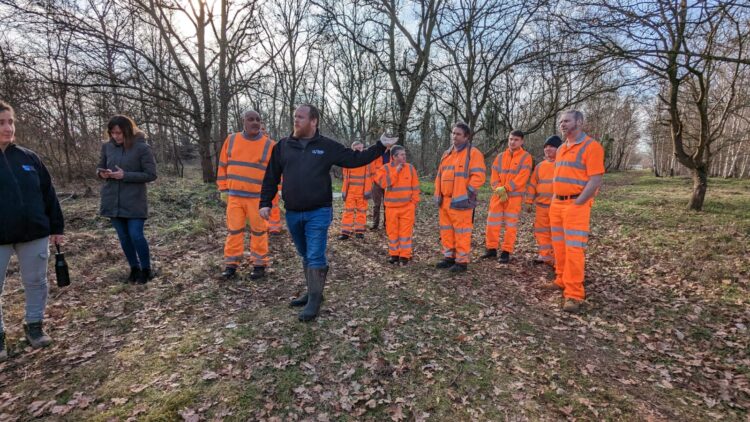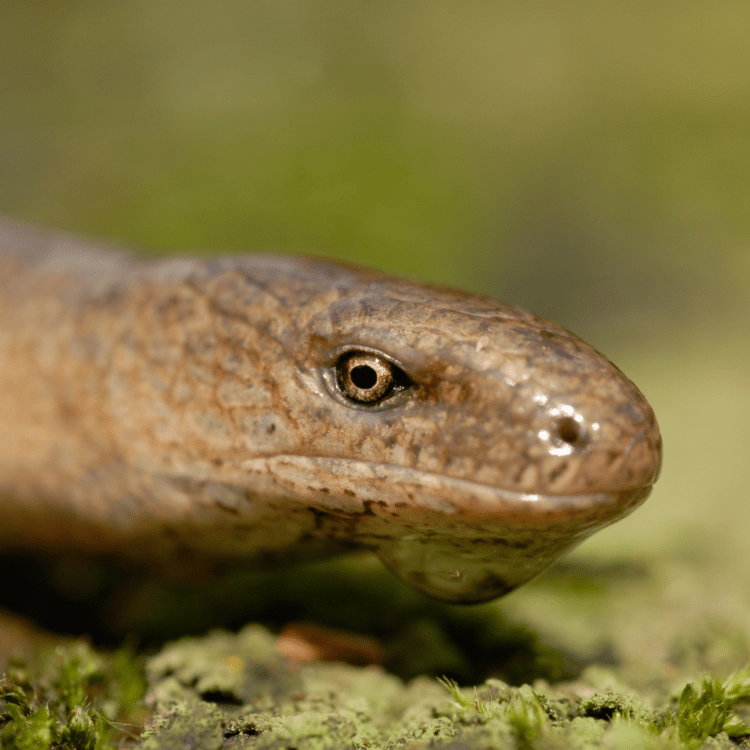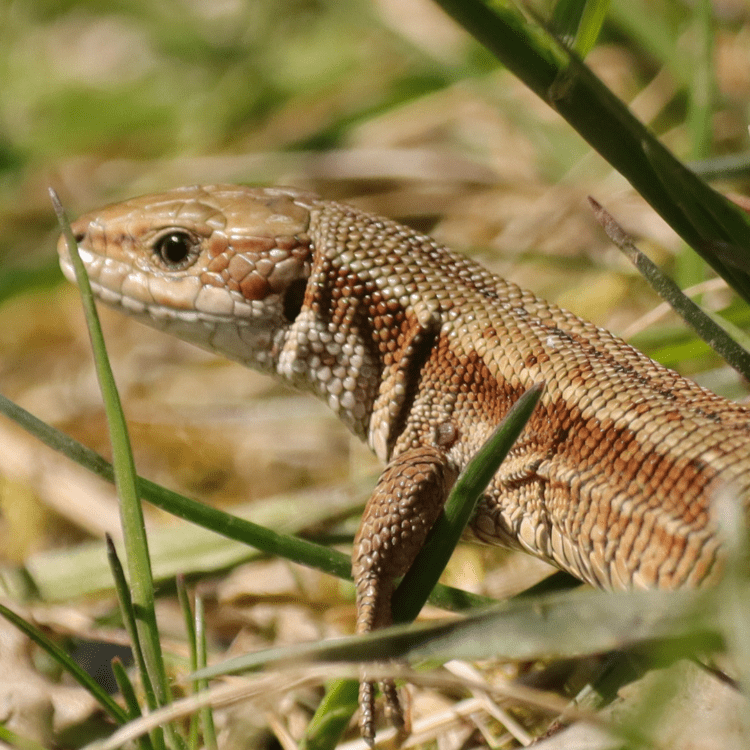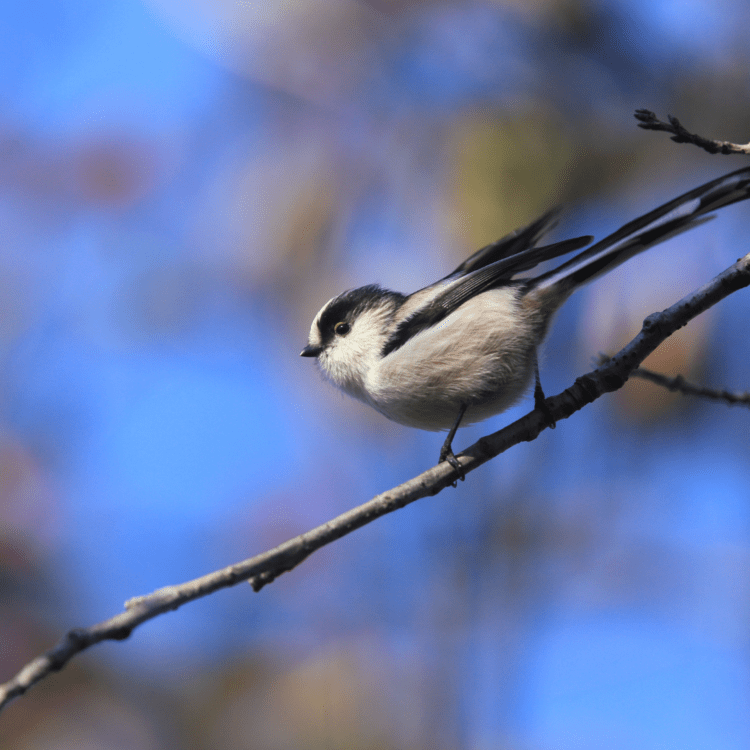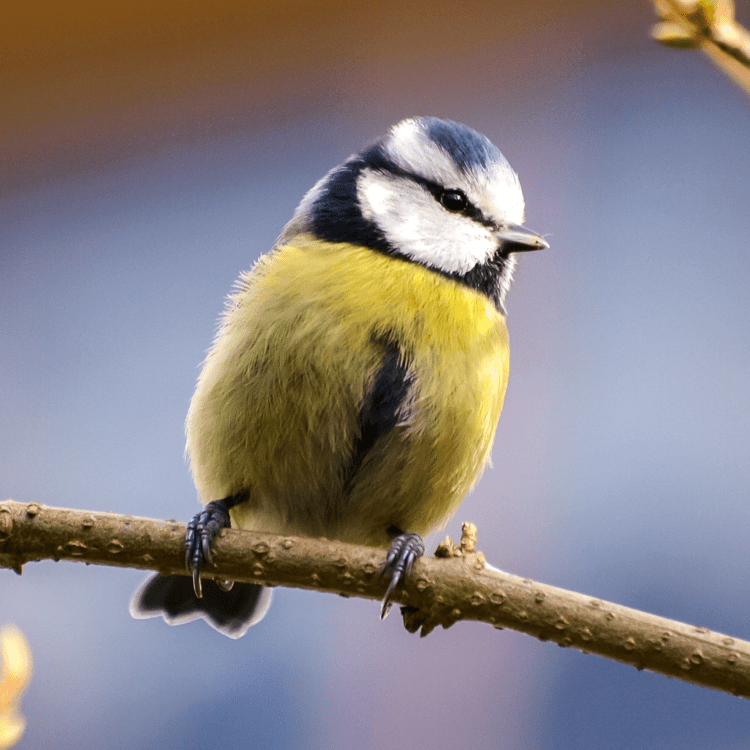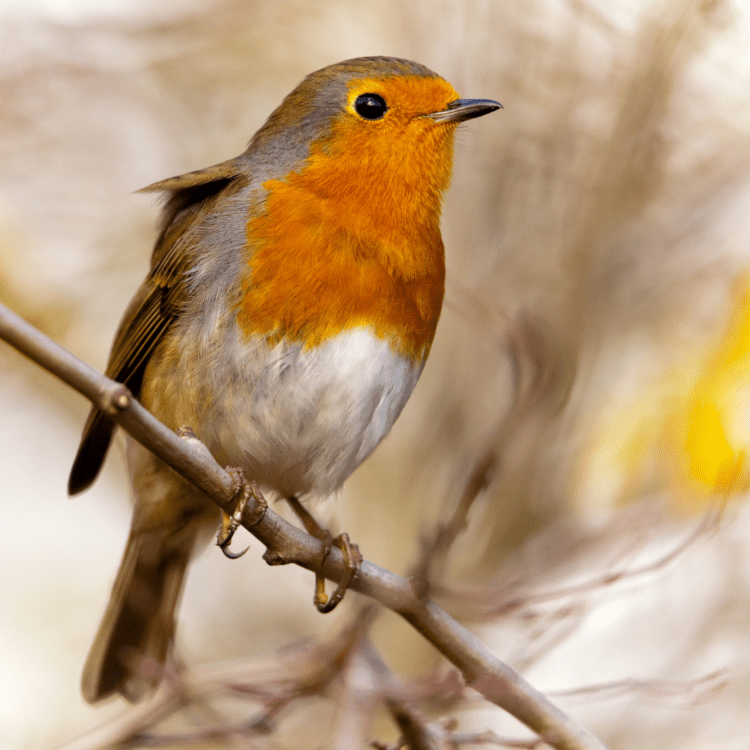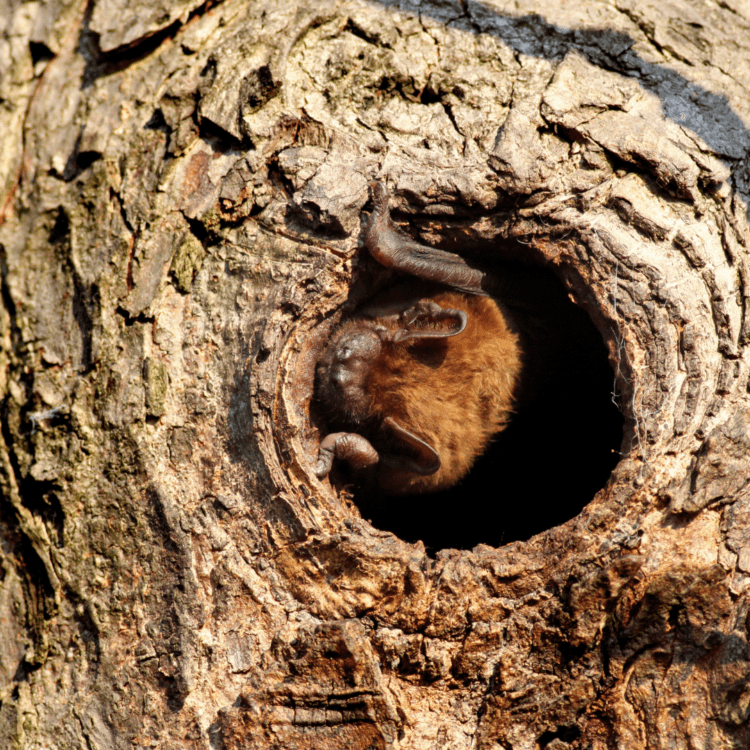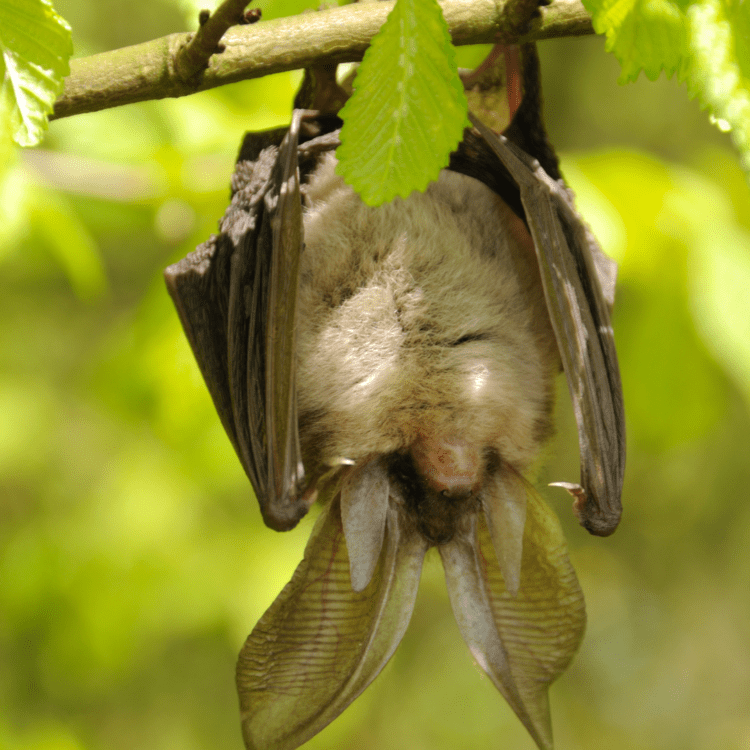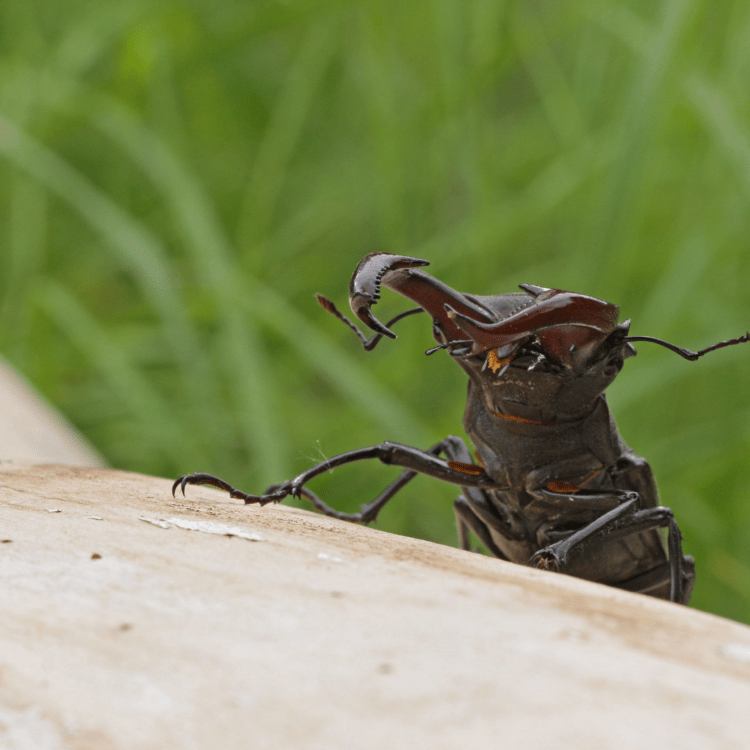Project Aims:

Enhancing and protecting trackside wildlife at the marshalling yard

Contributing to the biodiversity net positive by 2030 aim of South Western Railway

Creating community access for education, leisure, health and wellbeing
Tree planting, forestry and habitat management
Tilhill was engaged by SWR as part of a 5-year management plan (2020-2025), to bring their disused aspect of the site into active management as part of SWR’s Biodiversity net gain (BNG) ambitions and to make improvements to allow community access.
Site History
The Feltham Marshalling Yards were built at the end of the First World War in 1916-18. In 1969 the yards closed due to loss of train freight to road transport. The disused yard was left to degrade leaving brambles and other encroaching scrubby species to dominate the site.
On initiating the improvement project, the site was reviewed from a historic perspective and features were left on site such as concrete structures/sidings, which also have positive effects on some wildlife species (see habitat management section).
People
Owing to the site’s urban location, it offers an excellent resource for the local community to visit and enjoy.
The plan is to make the area publicly accessible by 2024 to enhance social value.
Tilhill, through effective site management, has ensured that rides and pathways have been established and maintained. Tilhill has offered ongoing advice to SWR for tree management to maintain overhanging or dangerous trees in public rights of way for safety. Tilhill has also advised on the long term management of woodlands to provide value for
the local community.
The woodland will provide a place for the public to enjoy alongside being able to provide access for volunteering and educational events. Tilhill and South Western Railway held a training day to discuss management practices and site improvements with the SWR sustainability and grounds maintenance team alongside the RSPB. Group activities included the removal of reptile fencing which had been placed to protect the migration of reptiles during tree planting works.
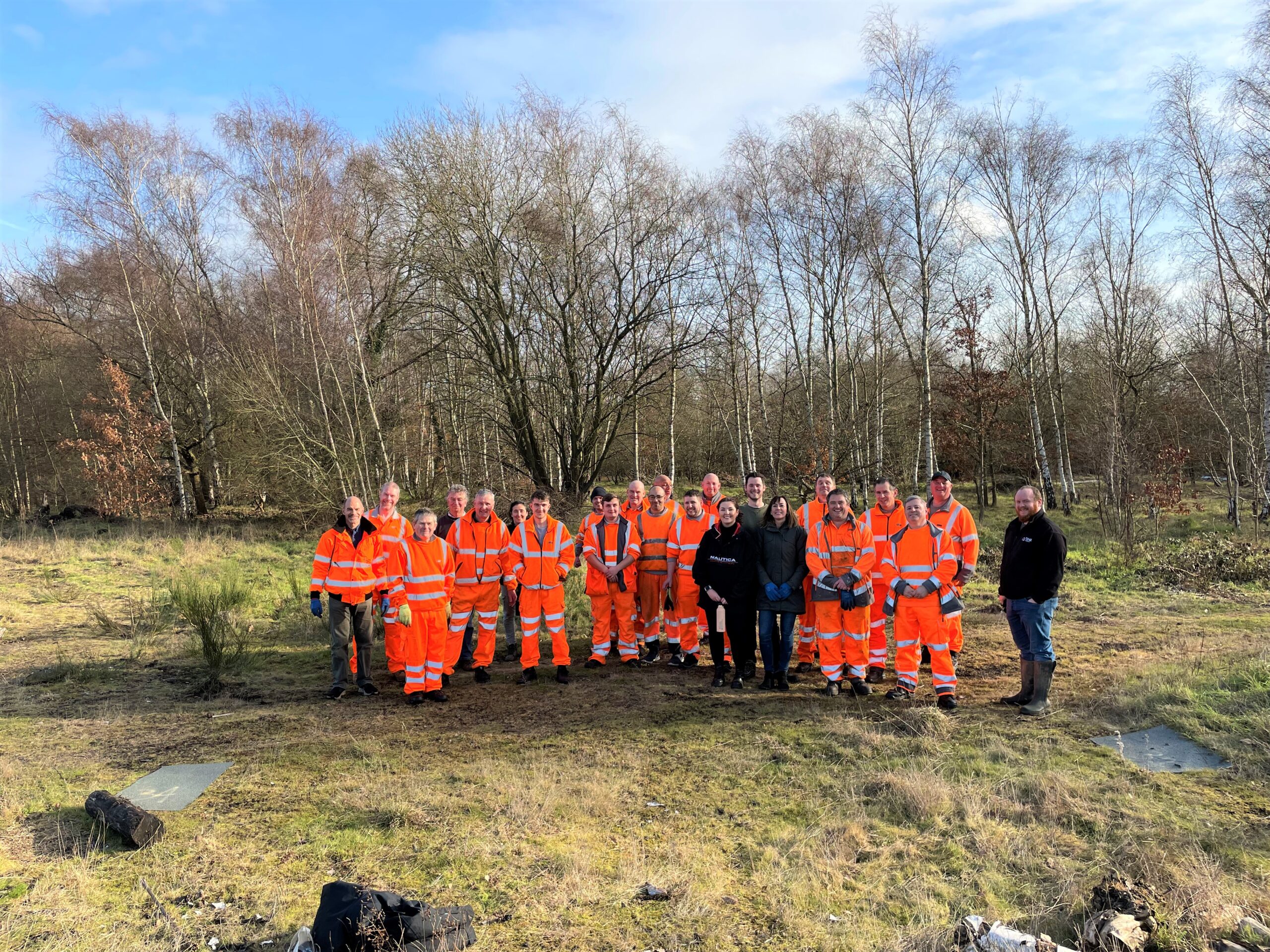
SWR Team with Tilhill at Training Day, Feltham Sidings
Soil and Grassland
The site is a rare lowland acid grassland, which developed due to the low nutrient acidic soil on acidic rocks and sandy soils; considered a nationally important habitat.
The areas of grassland have been cut with a mowing regime having been implemented to ensure areas are not dominated by brambles or coarse grasses. The arisings from cuttings are then removed to keep the acid soil stable by ensuring nutrients don’t build up and so seeds can still germinate.
The grass cut has improved the species composition and structure of the re-seeded acid grassland. The grassland can be adversely affected by the proliferation of birch and scrub. Active management, including tree thinning and scrub removal, keep the birch away from the grassland. This increases diversity and reinvigorates the acid grassland community.
Biodiversity
Tilhill carried out ecological surveys prior to any works taking place. These surveys are scheduled to be repeated annually using a local provider to establish environmental impacts and to identify habitats and species present on site. When comparing the survey results over the course of one year the following improvements were noted:
Reptiles: Good populations of Common lizard and Slow worms were seen on site. Reptile mats have been placed across the site for monitoring. Populations have remained stable with increases since translocation prior to work starting.
Birds: 25 Bird species were found on site, including breeding Blue tit, Robin, Whitethroat, Dunnock and Garden Warbler to name a few. The 2022 survey confirmed Willow Warbler, Wren and House Sparrow as new breeding species. Additionally, birds that appear on The Red List of Birds of Conservation Concern (BoCC5) were also present on site including House Sparrow, Starling and Herring Gull. Species benefited from the installation of bird boxes. Overall, the site presented an increase in diversity of bird species.
Mammals: 6 species of bats were found to be present on site including Common Pipistrelle, Soprano Pipistrelle, Noctule, Long-eared bat, Nyctalus Noctula and Leisler’s bat. This saw an increase compared to the previous year’s monitoring results and Environmental Impact Assessment (EIA). Leisler’s bat was recorded for the first time during the monitoring surveys and the Long-eared bat is new to the site.
Invertebrates: Spiders, True Bugs, Beetles, Crickets and Grasshoppers, Flys, Ants, Bees and Wasps were all discovered on site. Good management practices allowed for populations to thrive within areas of new planting, seed sowing and removal of encroaching species. A more detailed summary of the survey findings can be found in the Appendices.
Woodland and Habitat Management
To further improve the biodiversity of the site Tilhill carried out:
Woodland Management
Due to the disuse of the site over time, woodland encroachment had occurred where scrubby species like blackthorn and bramble and pioneer species such as the birch proliferated the area along with other more established species such as oak. This then provided a woodland habitat type of an early successional lowland woodland mixture.
The woodlands underwent a thinning regime to improve biodiversity and the woodland structure by opening up the ground to more light and heat. The aim was to improve growth of the remaining trees and an improved habitat of fauna and flora for a range of wildlife.
Deadwood or decaying trees have been left standing to be made use of by nature where it is safe to do so. This helps to create wildlife-rich habitats.
Habitat Management
Tilhill forest managers introduced bird and bat boxes to the site to help provide a safe breeding environment with the aim of increasing a range of species, some of which are rare or threatened.
Old historical marshalling remains, such as concrete blocks, have been left on site to preserve history whilst benefiting reptiles. Concrete warms quickly and acts as an excellent basking area for reptiles.
Some bare earth has also been left on site to increase habitat for bees to hibernate and encourage a variation of mosses to emerge. Overgrown areas of bramble monocultures which are not adding to the biodiversity are being removed to allow space for rides and tracks through the wood which will enhance plant diversity.
Tree Planting
Tree planting was carried out in 2020, introducing a diverse mix of species such as field maple, hazel, hawthorn, downy birch, alder buckthorn, blackthorn, elder, white beam, oak and guelder rose were planted to provide further shelter and extension of the wildlife corridor for mammals and birds.
The diverse mix of tree species alongside open areas will create wildlife-rich habitat and join up existing woodland and networks of nature and allow wildlife to move more freely.
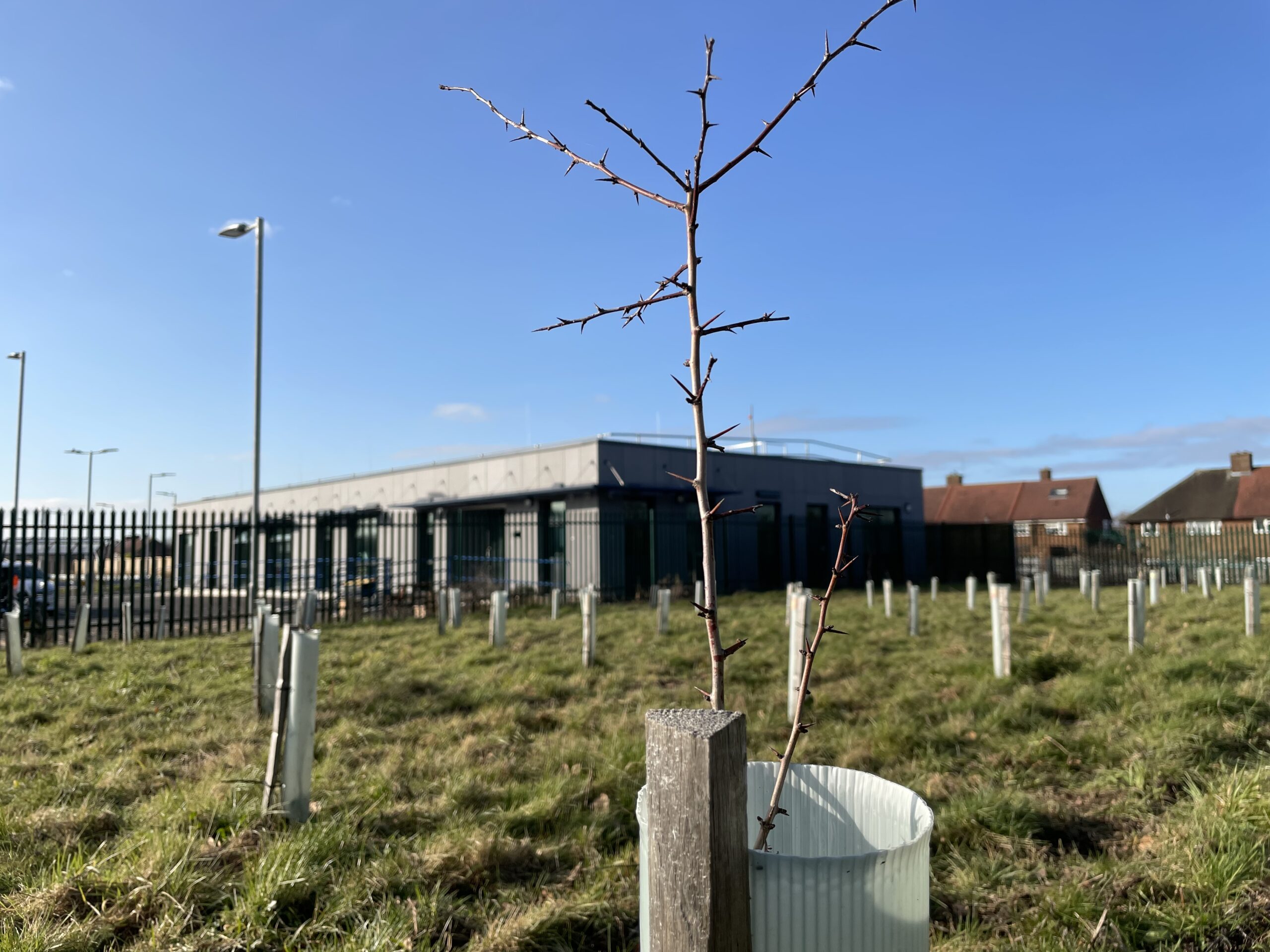
Tree Planting a diverse mix of native broadleaves
Climate Change
A beat up survey has been carried out to replace any trees that struggled during the 2022 heatwave and subsequent drought. Rowan has been introduced in 2023 as a strong and vigorous species known for its survival rates due to its hardiness and resistance to drought. Its berries will provide food for the wildlife once it becomes established, as it tends to fruit later in the year therefore can be an important food resource for wintering birds such as fieldfare and redwing, when other food resources are sparse.
The introduction of a mix of tree species and ages, alongside existing trees and shrubs, will ensure diversity and build a greater resilience to climate change.
Fire
Wildfires are becoming more frequent with the higher temperatures and changing climate. A fire occurred on the site in 2022 burning the grassland. However, the area recovered quickly and less than a year later showed vigorous growth, allowing the flora and fauna to emerge.
The fire removed some of the invasive species such as bramble and broom. Fire damaged shrubs, trees and brambles remain on site with plans for removal to allow for further acid grassland recovery and expansion.
Please see the PDF download for appendices including the Feltham Sidings Biodiversity Report Summary for Summer 2022.
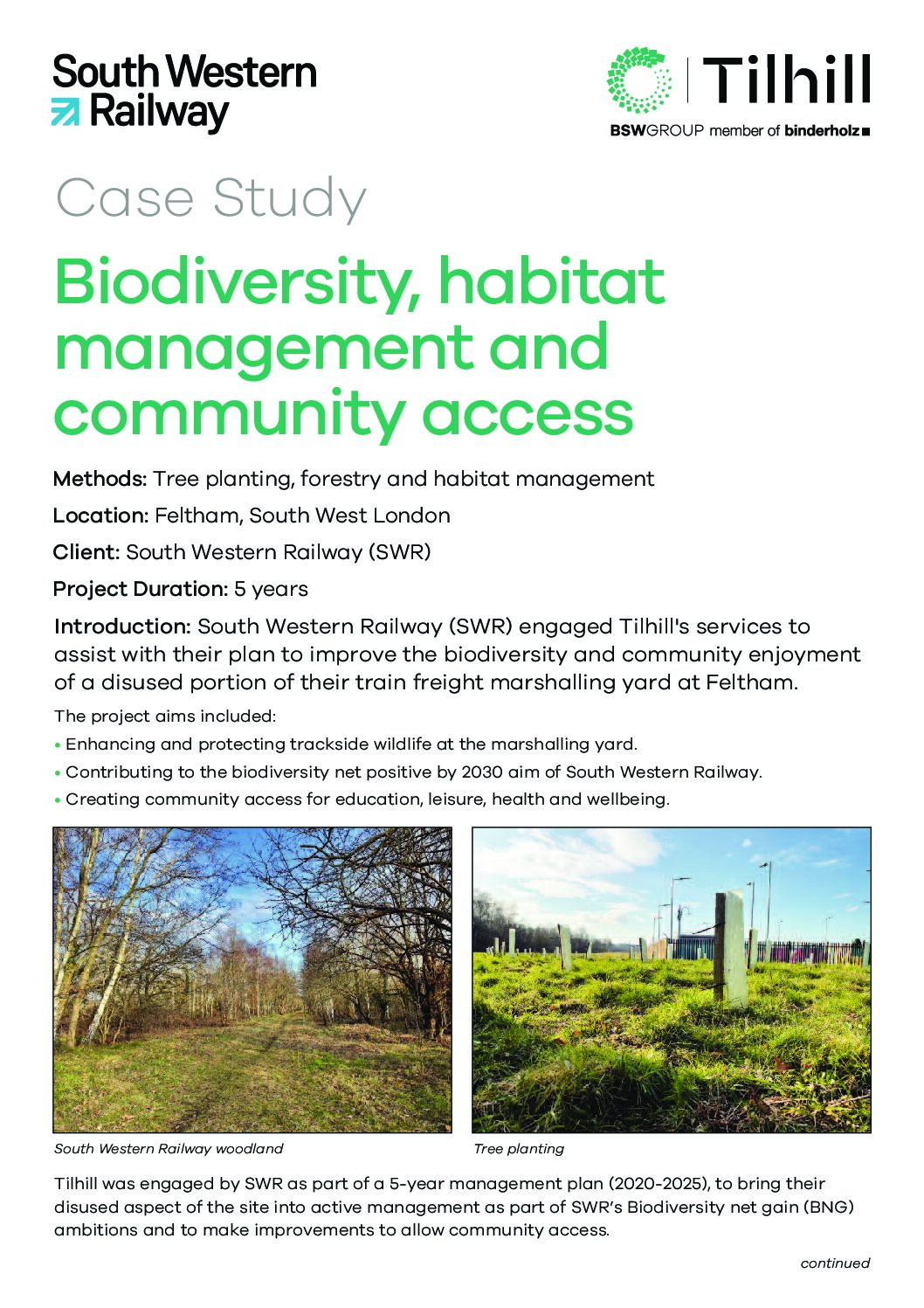
Download a PDF of this Case Study.
Biodiversity, Habitat Management and Community Access Case Study
ViewTilhill offers a complete woodland management service to forest or woodland owners, tailored according to their individual needs. If you have a similar project, our qualified and experienced forest managers can undertake every aspect of caring for your property. Get in touch today using the contact form below.
Back to all case studies
